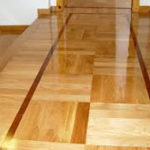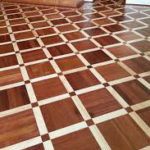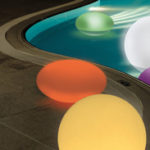An astronomical body orbiting a star or stellar remnant that is massive enough to be rounded by its gravity, is not massive enough to cause thermonuclear fusion, and has cleared its neighbouring region of planetesimals. Venus and Earth share similarities in their masses, sizes, densities, and relative locations in the solar system. Since they were presumably formed in the solar nebula from the same kind of rocky planetary building blocks, they also likely have similar overall chemical compositions. For these similarities, Venus has been called Earth’s twin. Earth is the third planet from the Sun and the fifth largest planet in the solar system in terms of size and mass.
- For instance, right now it is about 33 AU from the sun, while on average it is 39 AU.
- NASA also is building Europa Clipper and Dragonfly to explore moons of Jupiter and Saturn.
- They also result in a comparable surface gravity—humans standing on Venus would possess nearly 90 percent of their weight on Earth.
- Earth and the other planets in the solar system formed about 4.6 billion years ago.
- But scientists recently discovered an even smaller gassy object in the middle of nowhere (read more about it here).
Giant storms on Jupiter are common and they often last for a very long time. The famous Great Red Spot, for example, has raged for 300 years or more. The Earth is the largest terrestrial planet and the fifth-largest overall. It is the third planet from the Sun, with an average distance of 150 million km (93 million mi).
Dwarf Planet Makemake
As more and more matter fell toward the high density area, due to conservation of momentum it began to spin – rather like water going down a plug hole. The result was that as the gravity intensified, the spin became faster resulting in a flat disk of gas and dust surrounding a central high density sphere of gas. This page provides a brief description of each of the planets (and links to dwarf planets) of our solar system. You can also find out about the difference between planets, dwarf planets and small solar system bodies (SSSBs) here.
- Methane in Uranus’ atmosphere gives the planet its blue-green tint.
- Scientists have multiple theories that explain how the solar system formed.
- To some it appeared that the classification scheme was designed to limit the number of planets; to others it was incomplete and the terms unclear.
- This discovery led some to question whether Pluto was actually a planet or some other type of object.
- Earth rotates unevenly, spinning faster at the Equator than at the poles.
It appears redder than most brown dwarfs, and is likely much younger than most, too. This object could have formed just like a brown dwarf—from a small cloud of gas. Or maybe it was created around a star and it somehow got flung off into space. Saturn is the second-largest planet, and like Jupiter, it is a gas giant with no solid surface. It measures roughly 120,536 km (74,897 mi) across, more than 9 times larger than Earth.
Big planet or tiny star?
Water vapor can condense into clouds and fall back to Earth as precipitation. Plate tectonics are also responsible for landforms such as geysers, earthquakes, and volcanoes. Tectonic activity around the Pacific plate, for instance, creates the Ring of Fire. This tectonically active area includes volcanoes such as Mount Fuji, Japan, and earthquake-prone fault zones such as the west coast of the United States. The crust is covered by a series of constantly moving tectonic plates.
Telescopes usually cannot observe exoplanets directly, so astronomers have had to come up with methods to detect them. One method astronomers use is to look for a slight wobble in a star’s movement. This wobble is the result of the gravitational pull of a nearby planet. The tables below summarise some properties of objects generally agreed to satisfy https://cryptolisting.org/blog/5-steps-to-calculate-units-of-production-depreciation geophysical planet definitions. There are many smaller dwarf planet candidates, such as Salacia, that have not been included in the tables because astronomers disagree on whether or not they are dwarf planets. Pluto, the Nearest Dwarf PlanetPluto is a small, icy object about 2,302 kilometers (1,430 miles) across that orbits the sun beyond Neptune.
Mercury
By contrast, Charon, by virtue of its being a moon of Pluto, is not a dwarf planet, even though its diameter is more than half that of Pluto. The ranks of dwarf planets will likely be expanded as other objects known or yet to be discovered are determined to meet the conditions of the definition. Mercury, the closest planet to the Sun, is a diminutive, rocky world that orbits the Sun at an average distance of roughly 36 million miles (57.9 million kilometers). Of the eight currently recognized planets of the solar system, the inner four, from Mercury to Mars, are called terrestrial planets; those from Jupiter to Neptune are called giant planets or Jovian planets. Between these two main groups is a belt of numerous small bodies called asteroids. After Ceres and other larger asteroids were discovered in the early 19th century, the bodies in this class were also referred to as minor planets or planetoids, but the term asteroid is now used most widely.
Venus
Smoosh a few tons of carbon, silica, oxygen, ice, and some metals together, and you have an asteroid. Or collect 333,000 Earth masses of hydrogen and helium together, and you have a Sun-like star. Until the last part of the 20th century, Mercury was one of the least-understood planets, and even now the shortage of information about it leaves many basic questions unsettled. Messenger was launched in 2004, flew past the planet twice in 2008 and once in 2009, and settled into orbit in 2011. It mapped the entire surface of Mercury before crashing into the planet in 2015. Mercury’s proximity to the Sun has also been exploited to confirm predictions made by relativity theory about the way gravity affects space and time.
Is Pluto a planet?
Technical advances in telescopes led to the detection of very small, very distant objects. In the early 1990s, astronomers began finding numerous icy worlds orbiting the Sun in a doughnut-shaped region called the Kuiper Belt beyond the orbit of Neptune – out in Pluto’s realm. Venus’s mean radius is 6,051.8 km (3,760.4 miles), or about 95 percent of Earth’s at the Equator, while its mass is 4.87 × 1024 kg, or 81.5 percent that of Earth. The similarities to Earth in size and mass produce a similarity in density—5.24 grams per cubic centimetre for Venus, compared with 5.52 for Earth.
Terrestrial Planets (Inner planets)
Moreover, its surface shows significant differences from lunar terrain, including a lack of the massive dark-coloured lava flows known as maria and the presence of buckles and scarps that suggest Mercury is shrinking. Venus is a cloud-swaddled planet named for a love goddess, and often called Earth’s twin. Our nearest planetary neighbor, the second planet from the Sun, has a surface hot enough to melt lead.
























































































